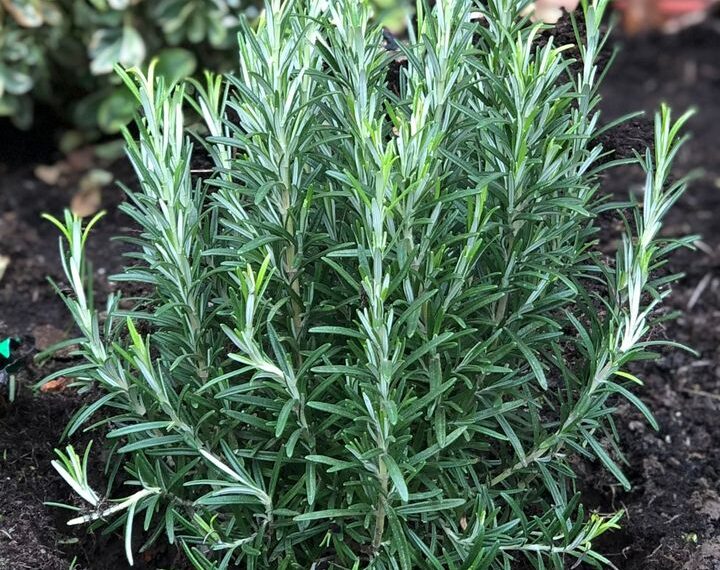Rosemary, a fragrant and versatile herb, is cherished for its culinary, medicinal, and ornamental uses. Whether you’re growing it for its delightful aroma, its contribution to your kitchen, or its beauty in the garden, rosemary is an asset to any backyard. However, while this hardy herb is easy to grow and care for, it’s important to know that rosemary doesn’t always play nice with every plant in your garden. There are certain plants that it needs to stay far away from to thrive.
In this article, we’ll explore the benefits of growing rosemary, the plants that are compatible with it, and, most importantly, the plants you should avoid planting near your rosemary for optimal growth.
Benefits of Growing Rosemary
Before diving into the plants rosemary needs to avoid, let’s look at why it’s such a great addition to any garden:
- Culinary Uses: Rosemary is a staple in many kitchens. Its fragrant leaves add a delightful flavor to meats, soups, vegetables, and even desserts.
- Medicinal Properties: This herb is known for its medicinal properties. Rosemary can help improve digestion, boost memory, and even has antioxidant and anti-inflammatory benefits.
- Low Maintenance: Rosemary is a hardy perennial that thrives in dry, sunny conditions. Once established, it’s drought-tolerant and can grow well in pots, raised beds, or directly in the garden.
- Repels Pests: The strong aroma of rosemary naturally repels many pests, including mosquitoes, aphids, and carrot flies, making it a great companion plant for certain crops.
Companion Plants for Rosemary
Rosemary is a great companion for a variety of plants, especially those that benefit from its pest-repelling qualities. Here are some plants that grow well alongside rosemary:
- Carrots: Rosemary deters carrot flies, making it an excellent companion for carrots.
- Beans: These two plants have a beneficial relationship where rosemary’s pest-repellent properties help protect the beans.
- Brassicas (Cabbage, Kale, Broccoli): Rosemary can help ward off pests like cabbage moths and other insects that attack brassica crops.
- Sage and Thyme: These herbs share similar growing conditions with rosemary, thriving in well-drained soil and full sun.
- Lavender: Both are Mediterranean herbs that prefer similar growing conditions, and they complement each other beautifully in the garden.
Plants Rosemary Needs to Stay Away From
While rosemary pairs well with some plants, it can stunt the growth of others. There are a few specific plants you should avoid planting near your rosemary to prevent competition and poor growth outcomes.
1. Mint
Mint is an aggressive grower that can quickly take over a garden. While rosemary thrives in dry, well-drained soil, mint prefers moist soil, which makes these two plants incompatible. Mint can also choke out rosemary by overshadowing it and competing for resources like sunlight, water, and nutrients. If you want to grow both, keep them in separate containers to avoid issues.
2. Basil
Basil and rosemary have different watering needs, which can create problems when they are planted together. Basil thrives in moist, well-watered soil, while rosemary prefers dry conditions. The excessive watering needed for basil can lead to root rot in rosemary, making them poor garden companions.
3. Cucumbers
Cucumbers are another plant that doesn’t pair well with rosemary. Cucumbers need a lot of water and nutrient-rich soil to produce abundant fruits. The dry conditions rosemary prefers are not conducive to cucumber growth. Additionally, the strong aroma of rosemary can interfere with the delicate flavor of cucumbers.
4. Tomatoes
Tomatoes and rosemary are often mistakenly planted together, but they are actually not a good match. Tomatoes need more consistent watering and nutrient-rich soil, while rosemary thrives in leaner, drier conditions. Planting these two together could lead to poor growth for both plants, with neither thriving as they should.
5. Pumpkins and Squash
Pumpkins and squash are heavy feeders that require nutrient-dense soil to grow well. Rosemary prefers sandy, well-drained soil with fewer nutrients, so planting it near pumpkins or squash could lead to competition for resources. Both plants could suffer as a result, and their growth may be stunted.
Tips for Growing Rosemary Successfully
To ensure that your rosemary thrives and continues to produce its flavorful leaves, follow these tips for planting and care:
- Choose the Right Location: Rosemary loves full sun and needs at least 6-8 hours of direct sunlight each day. Plant it in a location that gets plenty of light and good air circulation.
- Well-Drained Soil: Rosemary prefers soil that drains well and doesn’t retain moisture. You can amend your garden soil with sand or gravel to improve drainage, or plant rosemary in pots with proper drainage holes.
- Watering: Be cautious not to overwater rosemary. Water only when the top inch of soil is dry to the touch. Overwatering can lead to root rot, a common issue with rosemary.
- Prune Regularly: Pruning rosemary encourages new growth and keeps the plant bushy and healthy. Regularly trimming back a few inches will prevent the plant from becoming leggy.
- Protect in Cold Climates: Rosemary is sensitive to frost, so if you live in a colder climate, consider growing rosemary in containers that can be brought indoors during the winter.
Conclusion
Rosemary is a fantastic addition to any backyard garden. Its fragrance, culinary uses, and pest-repelling properties make it a must-have herb. However, it’s important to be mindful of the plants you grow alongside it. By avoiding incompatible plants like mint, basil, and cucumbers, and ensuring rosemary is given the right growing conditions, you can enjoy a healthy, thriving rosemary plant for years to come.
Happy gardening!
